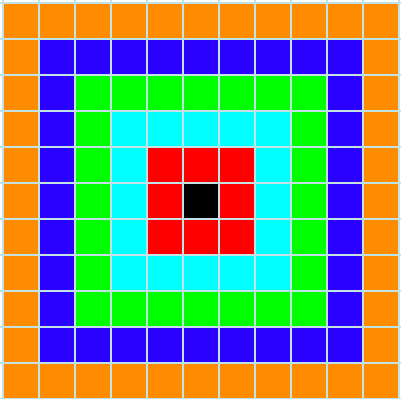Copyright © University of Cambridge. All rights reserved.
'Walking the Squares' printed from https://nrich.maths.org/
Show menu
Why do this problem?
This activity gives pupils an opportunity to explore a scenario and gradually start using a strategy while learning to overcome difficulties. It also gives pupils an opportunity to use their curiosity to pursue many different associated questions. Their perseverance can be tested alongside their resilience in answering their own questions
of "I wonder what would happen if we . . .?
Possible approach
It would be good to give pupils a sheet with several copies of the square on it (see here for doc or pdf).
The pupils can then work on the first one. If (and when!) they come to a stop because they realise it is going wrong, encourage them not to rub it out but write about what they are thinking - in particular what they did and what they should now do - on the right and start again underneath.
Key questions
Tell me about what happened here that made you start again.
You seen to be using a system (if it looks like it!) can you tell me about it?
Is there anything you would like to change about the way that you did it?
Have you covered as many pairs as possible?
Possible extension
Here is a page (doc, pdf) that gives you an opportunity to print out four different sizes of squares for the pupils to have a go at and compare, and perhaps then they can be encouraged to make some predictions.
Possible support
Some pupils might want to use some drawing software.


